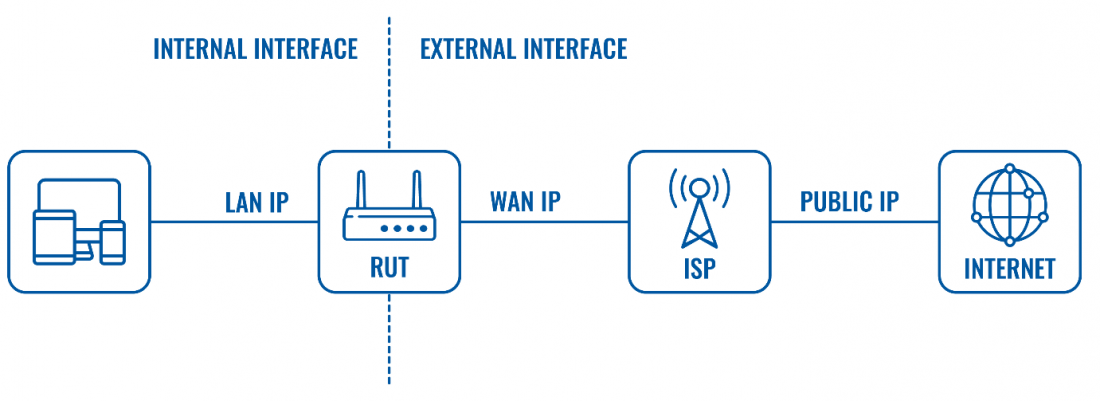Private and Public IP Addresses
The are two types of Internet Protocol (IP) addresses: Public and Private.
A router will typically have two types of network interfaces:
- An Internal Interface
- An external Interface
Each of these interfaces will have an IP address.
נהסדגכעגדכ
Private IP address
Private IP address (Internal) is only used by devices communicating to each other on the same network. Devices with private IP addresses cannot connect to the Internet directly. Likewise, computers or other devices outside the local network cannot connect directly to a device with a private IP.
An IP address is considered private if the IP number falls within one of the IP address ranges reserved for private networks such as a Local Area Network (LAN). The Internet Assigned Numbers Authority (IANA) has reserved the following three blocks of the IP address space for private networks (local networks):
10.0.0.0 - 10.255.255.255 (Total Addresses: 16,777,216)
172.16.0.0 - 172.31.255.255 (Total Addresses: 1,048,576)
192.168.0.0 - 192.168.255.255 (Total Addresses: 65,536)
IP Address Terminology
Static means the IP address never changes as long as you stay with the same provider or same server.
Dynamic means the IP address can change from time-to-time.
Public means the IP address can be reached via the Internet from any computer in the world.
Private means the IP address can only be reached by other devices on the same network.
Shared means other people besides you use your IP address for their connection.
Dedicated means no one else uses your IP address for their connection.
Class identifies the range of your IP address and the default subnet mask. Examples of IP classes:
- A class - 0 to 127 with default mask of 255.0.0.0
- B class - 128 to 191 with default mask of 255.255.0.0
- C class - 192 to 223 with default mask of 255.255.255.0
- D class - 224 to 247 (not currently used)
- E class - 248 to 255 (not currently used)
Frequently Asked Questions
How to obtain a static IP address?
If you prefer a static IP address, contact your service provider. Customers can sometimes obtain a static IP by subscribing to a special service plan and paying extra fees.
Can I setup remote access for my Teltonika router with a dynamic IP address?
Yes. You can use Dynamic DNS or RMS services.
What are the advantages and disadvantages of a static IP address?
Advantages:
Convenient remote access – when you remotely connect to a router you need not worry about the IP address changing.
Static IP addresses are more stable for Internet use since they never change. In cases of a dynamic IP addresses, the Internet service provider may automatically change the address on a regular basis, as frequently as every few hours. This can cause a lapse in the connection.
Disadvantages:
Security – a router with a static IP address is much easier to track through the Internet. A Static IP Address could be a security risk as the IP address is constant, therefore, there is a greater chance of hacking.
What are the advantages and disadvantages of a dynamic IP address?
Security – routers that have Dynamic IP addresses have a relatively lower security risk.
Remote Access – for permanent access to the router from a remote location you will need a DNS address service that can update your IP address regularly.

